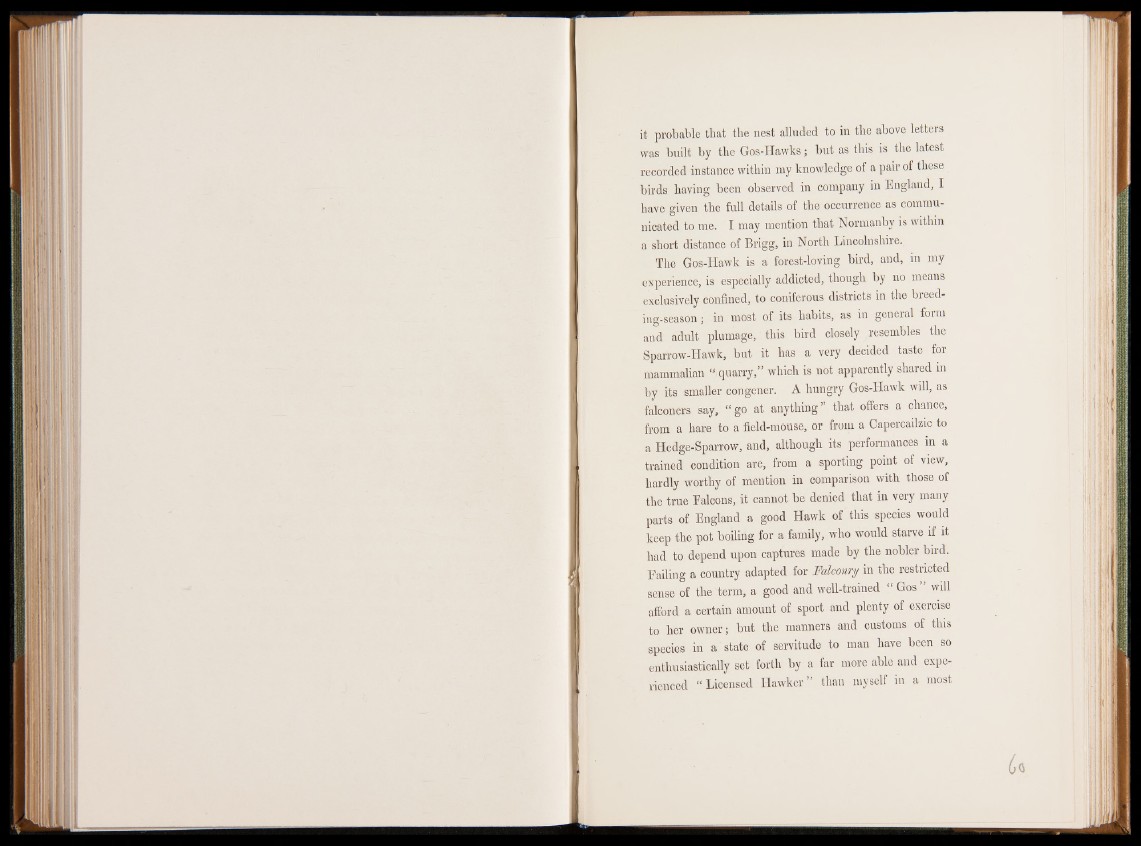
it probable that the nest alluded to in the above letters
was built by the Gos-Hawks; but as this is the latest
recorded instance within my knowledge of a pair of these
birds having been observed in company in England, I
have given the full details of the occurrence as communicated
to me. I may mention that Normanby is within
a short distance of Brigg, in North Lincolnshire.
The Gos-Hawk is a forest-loving bird, and, m my
experience, is especially addicted, though by no means
exclusively confined, to coniferous districts in the breeding
season ; in most of its habits, as in general form
and adult plumage, this bird closely resembles the
Sparrow-Hawk, but it has a very decided taste for
mammalian “ quarry,” which is not apparently shared in
by its smaller congener. A hungry Gos-Hawk will, as
falconers say, “ go at anything” that offers a chance,
from a hare to a field-mouse, or from a Capercailzie to
a Hedge-Sparrow, and, although its performances in a
trained condition are, from a sporting point of view,
hardly worthy of mention in comparison with those of
the true Ealcons, it cannot be denied that in very many
parts of England a good Hawk of this species would
keep the pot boiling for a family, who would starve if it
had to depend upon captures made by the nobler bird.
Failing a country adapted for Falconry in the restricted
sense of the term, a good and well-trained “ Gos” will
afford a certain amount of sport and plenty of exercise
to her owner; but the manners and customs of this
species in a state of servitude to man have been so
enthusiastically set forth by a far more able and experienced
“ Licensed Hawker” than myself in a most